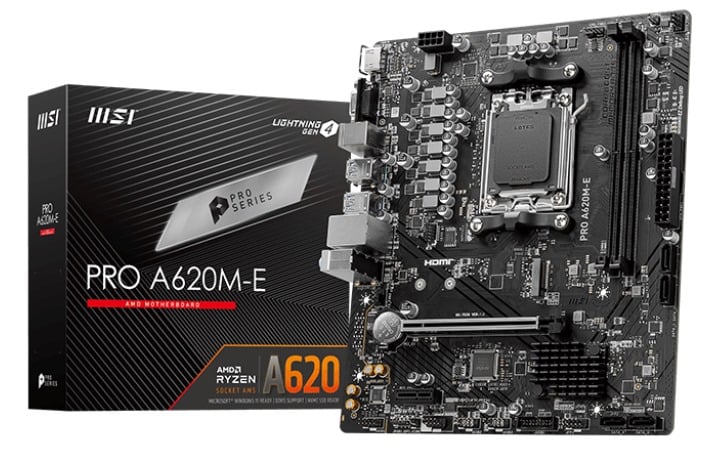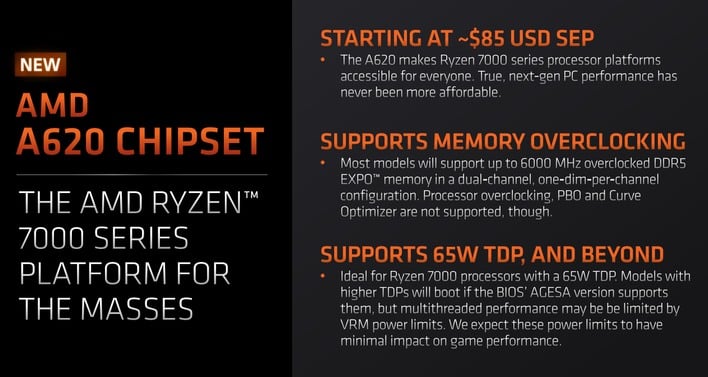Budget A620 Motherboards For Ryzen CPUs May Not Support TDPs Above 65W

Motherboards based on AMD's upcoming A620 chipset may cheap out on something even more central: CPU support. This "may" isn't in terms of "we're not sure", but rather, because it will vary by model. Boards created using the chipset are only required to guarantee power delivery up to 88W for the CPU socket, and that's not nearly enough for the higher-end Zen 4 processors.

AMD didn't send out any A620 motherboard review samples, and the launch happened on April 1st, so the details were easy to lose in the shuffle of japes and jocularity. Some of the details we've talked about before: prices starting as low as $85 USD, and support for memory overclocking even if CPU overclocking is off the table. That unfortunately includes the power-saving Curve Optimizer as well as Precision Boost Overdrive.

The reason for the lack of overclocking and the limited CPU support are likely one and the same: extremely underbuilt VRMs like the one we saw on the A620M-HDV/M.2 when it got leaked last week. That board has just six power phases and absolutely no cooling for them. Meanwhile, the MSI PRO A620M-E (pictured top) has a few more, but even less connectivity. It reminds us of the days when AMD's Athlon Thunderbird 1400 and its 72W TDP were absolutely outrageously-high.
AMD says that higher-power CPUs "will boot if the BIOS' AGESA version supports them," but that performance "may" be limited by VRM power limits. The company goes on to say that it expects these power limits to have "minimal impact on game performance." That sounds crazy on the face of it, but there may be some truth to that. We saw shockingly similar gaming performance out of the 65W "non-X" Ryzen processors compared to their 105W and 170W "X" siblings.
So saying, sticking to something like a Ryzen 7 7700 may be an economical choice, an ecological pick, and an effective solution all at once. You can still stick 6000 MT/s DIMMs in most of the A620 boards, meaning that you're probably going to get very nearly the same performance out of such a system as you would out of a much more expensive machine with an "X" CPU and B650 or X670 motherboard. We'd probably get a down-draft heatsink just to be safe, though.


